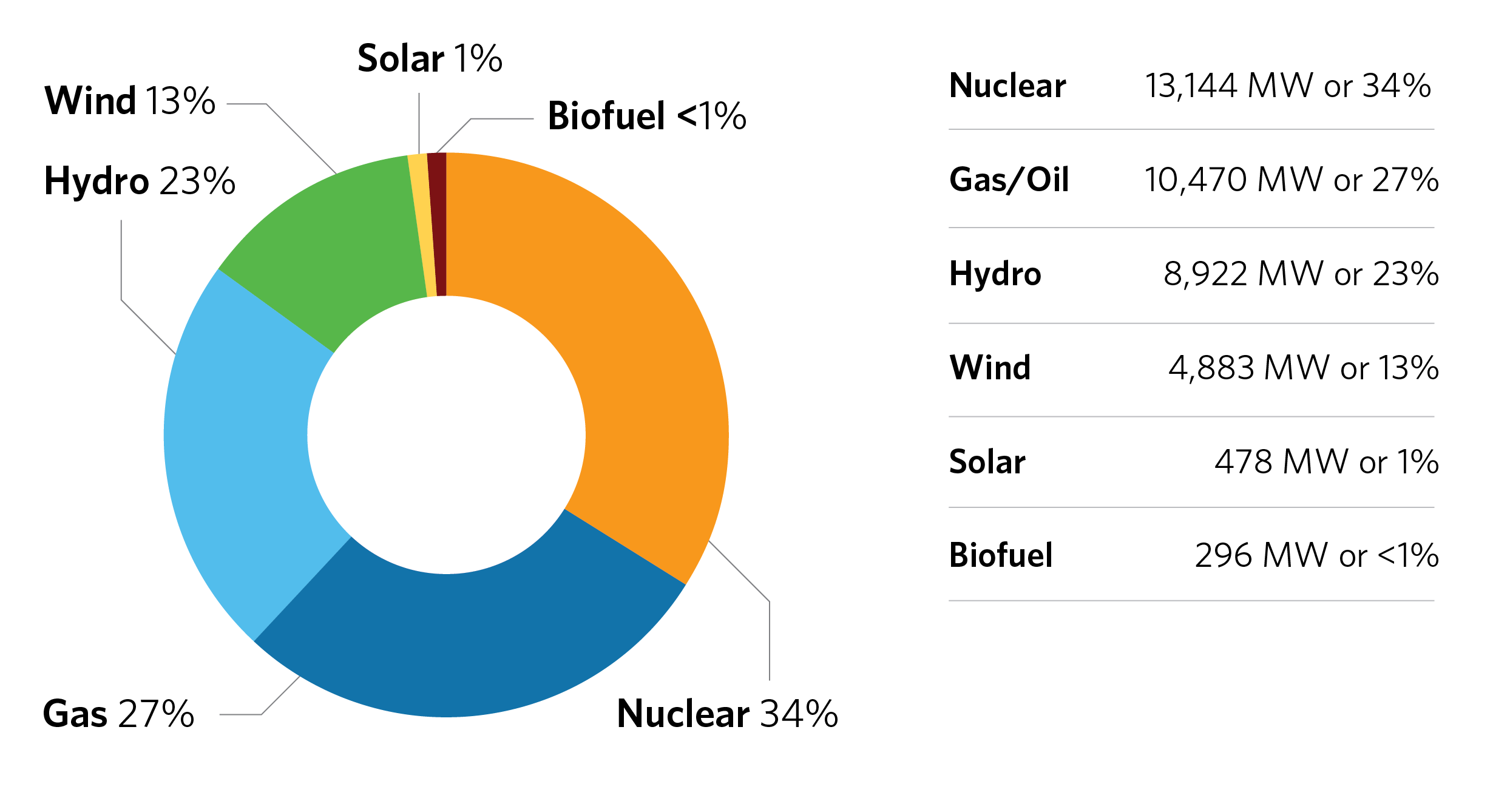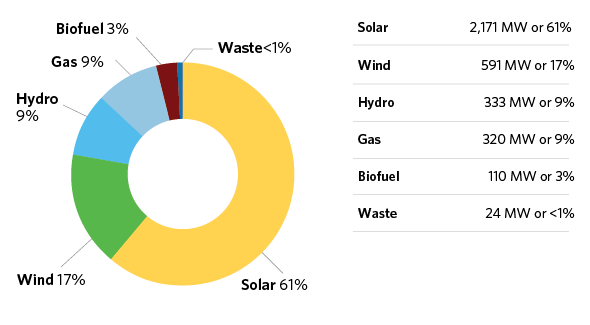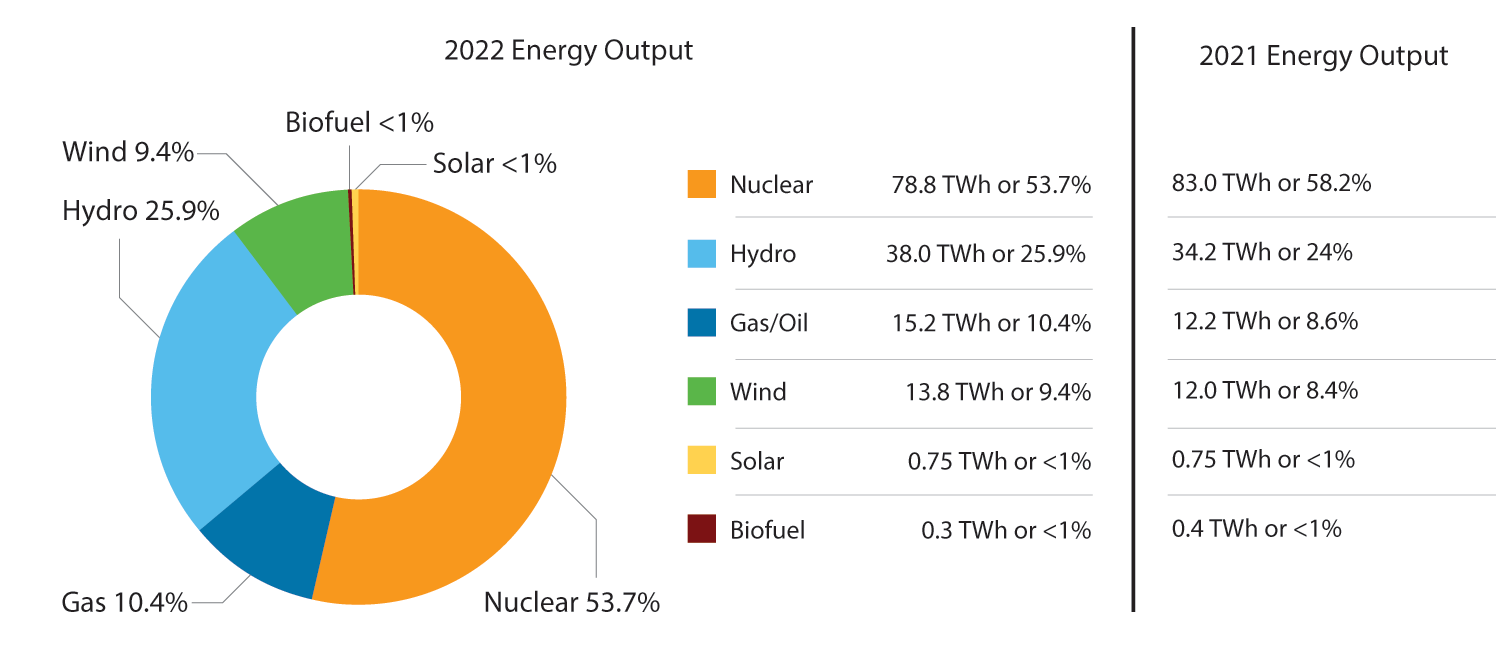Supply Mix and Generation
Ontario has a clean electricity grid with a range of diverse resources, including hydro, nuclear, natural gas and renewables. Each resource generates electricity differently and has unique operating characteristics. Because no single resource can meet all of the system’s needs at all times, maintaining a diverse supply mix is an effective way to ensure the ongoing reliability of Ontario’s electricity system.
Capacity
Capacity is a measure of the maximum amount of electricity the province’s system can supply at any given time. Ontario’s capacity is constantly changing as new supply comes online, older generators are taken out of service and new technologies are introduced.



Distributed Energy Resources | Ontario’s Electricity Grid
One of the most significant changes to electricity systems around the world has been the emergence of new technologies that can support locally-owned facilities for electricity generation and storage.
